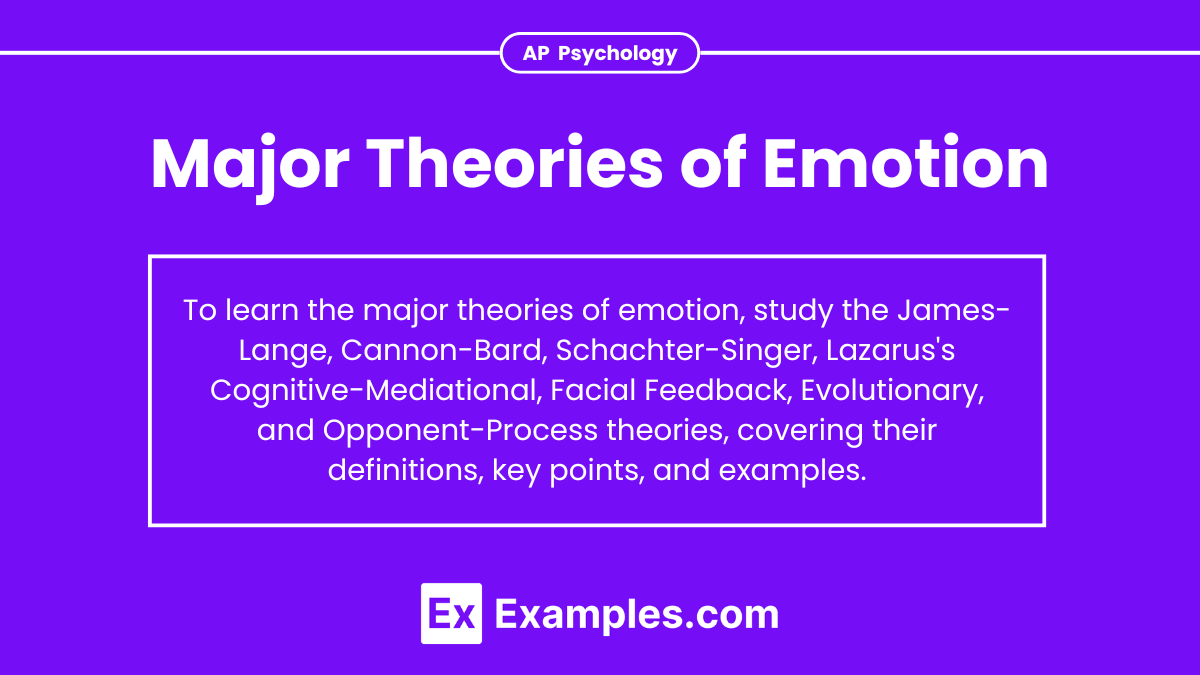Learn the major theories of emotion is crucial for the AP Psychology exam. Key theories include James-Lange, which states emotions follow physiological responses; Cannon-Bard, where emotions and responses occur simultaneously; Schachter-Singer’s Two-Factor, combining arousal and cognitive label; Lazarus’s Cognitive-Mediational, emphasizing appraisal; Facial Feedback Hypothesis, where expressions influence emotion; Evolutionary Theory, linking emotions to survival; and Opponent-Process Theory, highlighting opposing emotional pairs. Mastery of these concepts aids in explaining and differentiating emotional experiences.
LearningObjectives
Understand and differentiate between the major theories of emotion: James-Lange, Cannon-Bard, Schachter-Singer (Two-Factor), Lazarus’s Cognitive-Mediational, Facial Feedback Hypothesis, Evolutionary Theory, and Opponent-Process Theory. Focus on the key concepts, mechanisms, and examples for each theory. Be able to explain how each theory interprets the relationship between physiological responses, cognitive appraisal, and emotional experience. Recognize how these theories apply to real-life scenarios and psychological research.
1. James-Lange Theory
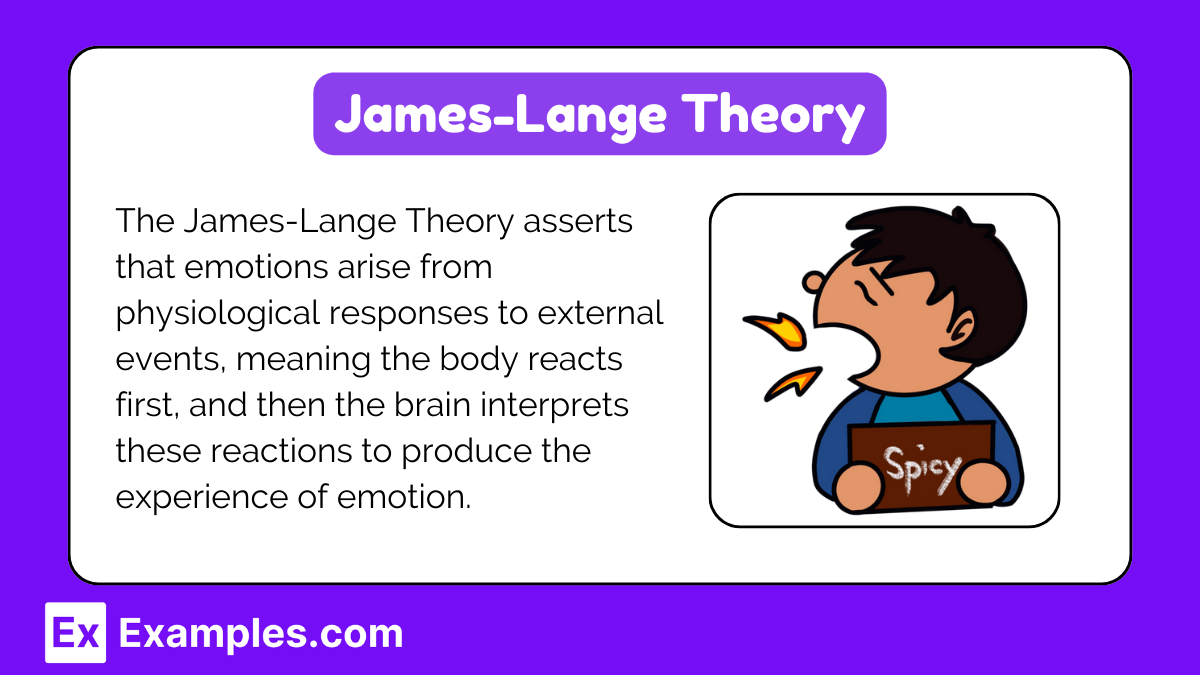
Definition: The James-Lange Theory proposes that emotions occur as a result of physiological reactions to events. According to this theory, we experience emotions by interpreting our bodily reactions to stimuli.
Key Points:
- Stimulus: An external event or situation.
- Physiological Response: Bodily reactions such as increased heart rate, sweating, or trembling.
- Emotion: The awareness and interpretation of these physiological responses as specific emotions.
Example:
- Seeing a snake (stimulus) causes your heart to race and you start to tremble (physiological response). You interpret these bodily changes as fear.
2. Cannon-Bard Theory
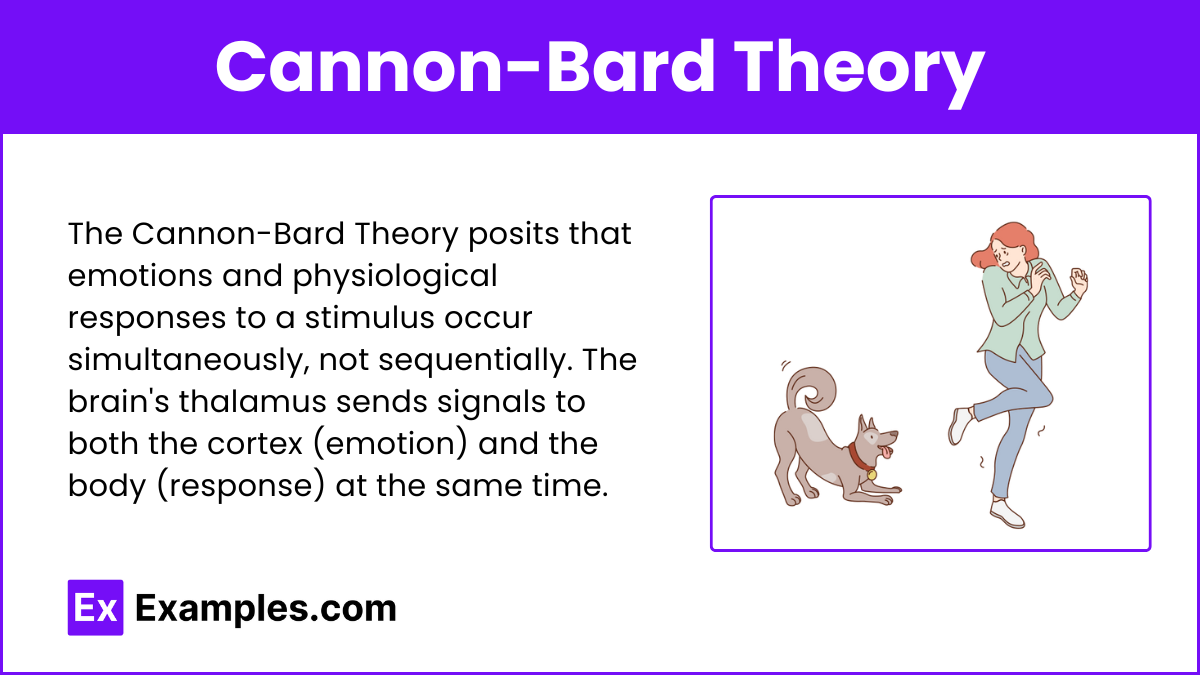
Definition: The Cannon-Bard Theory suggests that we experience emotions and physiological responses simultaneously, not sequentially.
Key Points:
- Stimulus: Triggers both emotion and physiological responses at the same time.
- Thalamus: Plays a key role by sending messages to the brain and the body simultaneously.
Example:
- Encountering a snake (stimulus) simultaneously causes you to feel fear (emotion) and experience a racing heart (physiological response).
3. Schachter-Singer Two-Factor Theory
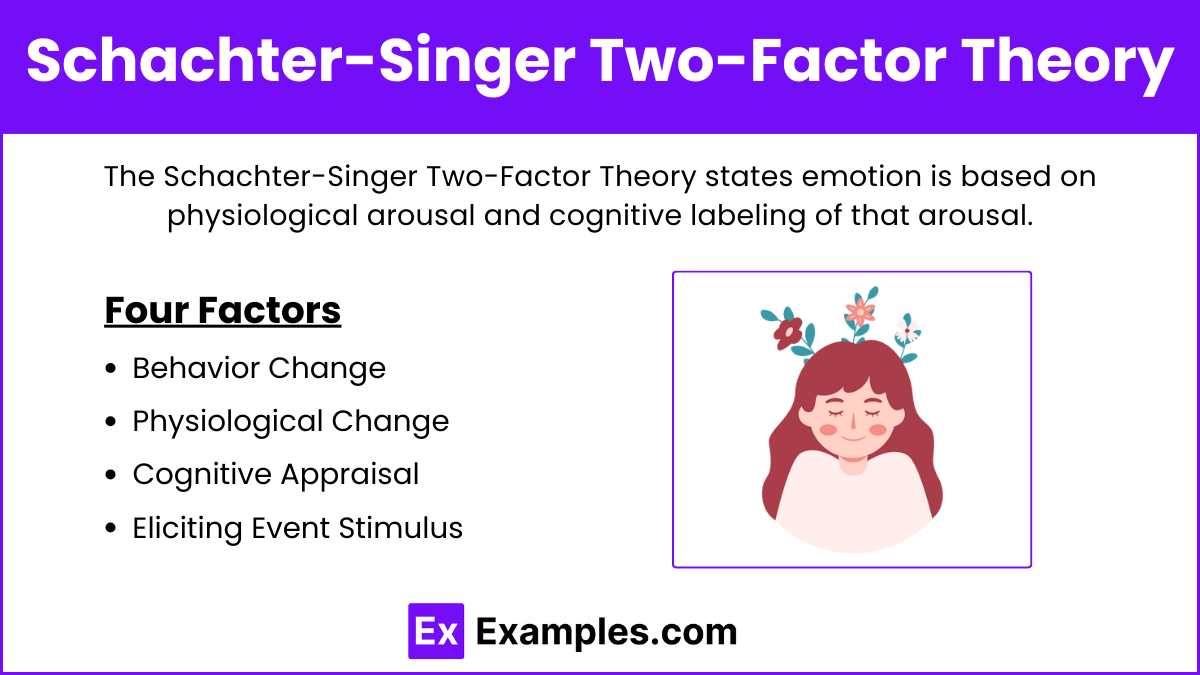
Definition: The Schachter-Singer Theory, also known as the Two-Factor Theory, posits that emotion is based on two factors: physiological arousal and cognitive label.
Key Points:
- Physiological Arousal: Physical reactions to a stimulus.
- Cognitive Label: The interpretation and labeling of these physiological changes.
- Emotion: A combination of arousal and the label we apply to it.
Example:
- After jogging (physiological arousal), if you receive good news, you might label your arousal as excitement (emotion).
4. Lazarus’s Cognitive-Mediational Theory
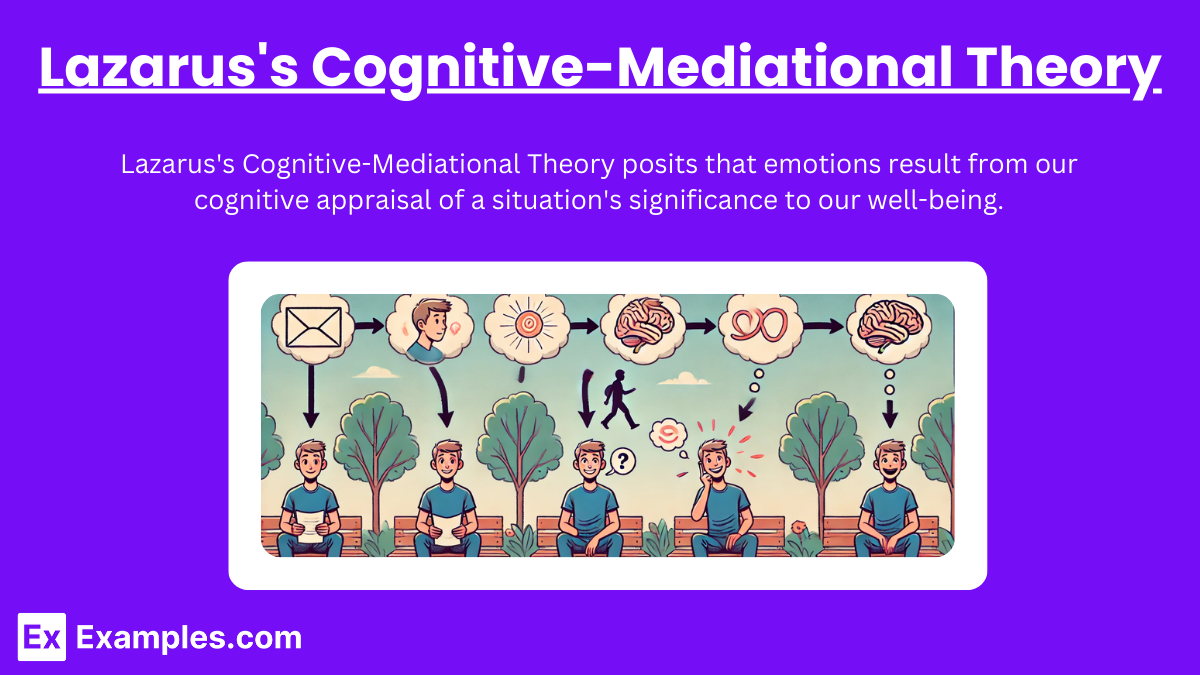
Definition: Lazarus’s Theory emphasizes the role of cognitive appraisal in the experience of emotion. According to this theory, our emotions are determined by our appraisal of the stimulus.
Key Points:
- Primary Appraisal: Initial evaluation of the significance of the event.
- Secondary Appraisal: Evaluation Plan of the ability to cope with or respond to the event.
- Emotion: Result of these appraisals.
Example:
- Seeing a snake (stimulus) leads you to assess it as dangerous (primary appraisal) and realize you can run away (secondary appraisal), resulting in fear (emotion).
5. Facial Feedback Hypothesis
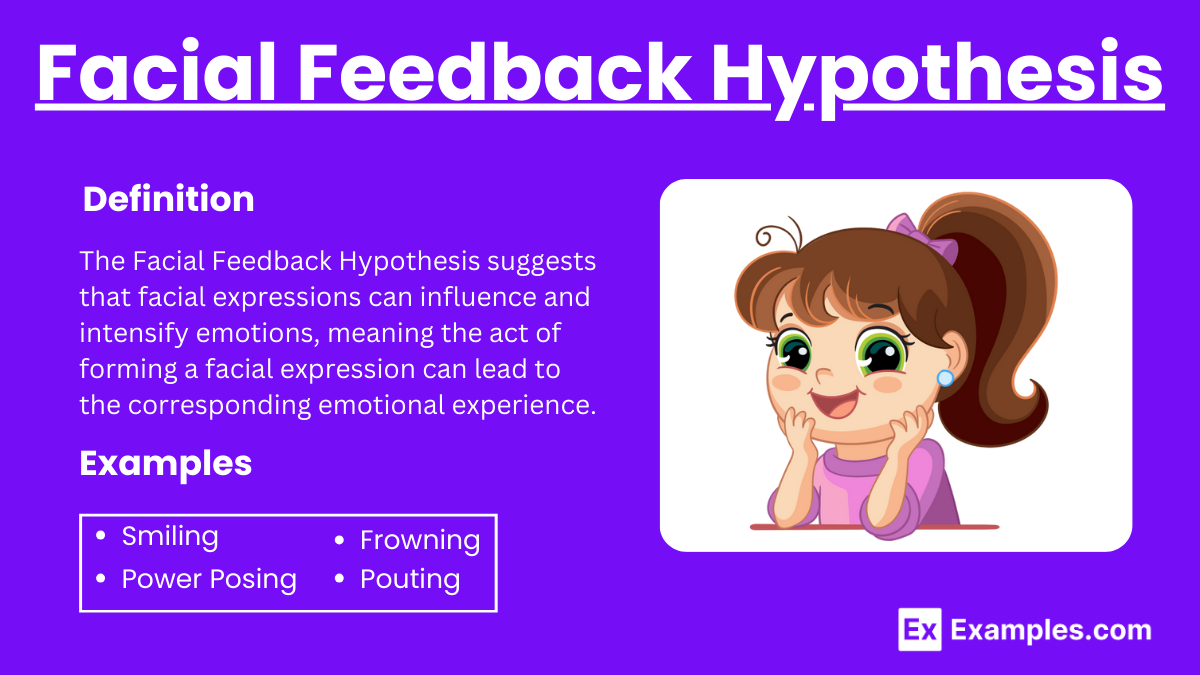
Definition: The Facial Feedback Hypothesis suggests that facial expressions can influence emotional experiences.
Key Points:
- Facial Expressions: Contribute to the feeling of the emotion.
- Feedback Loop: The act of smiling can make you feel happier, while frowning can make you feel sadder.
Example:
- Smiling during a stressful situation can help you feel more Positive Reinforcement and less stressed.
6. Evolutionary Theory of Emotion
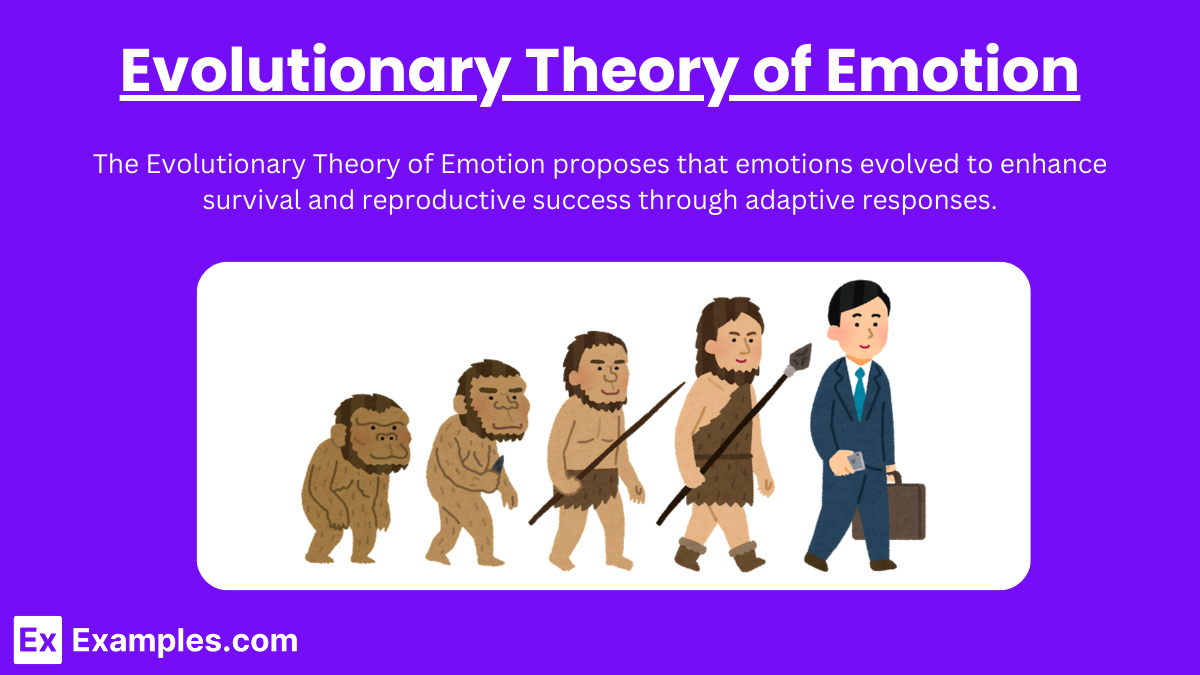
Definition: The Evolutionary Theory of Emotion, proposed by Charles Darwin, argues that emotions have evolved to help us survive and reproduce.
Key Points:
- Adaptive Value: Emotions have evolved because they serve crucial survival functions.
- Universality: Basic emotions are universal across cultures.
Example:
- Fear helps individuals avoid danger, increasing chances of survival.
7. Opponent-Process Theory
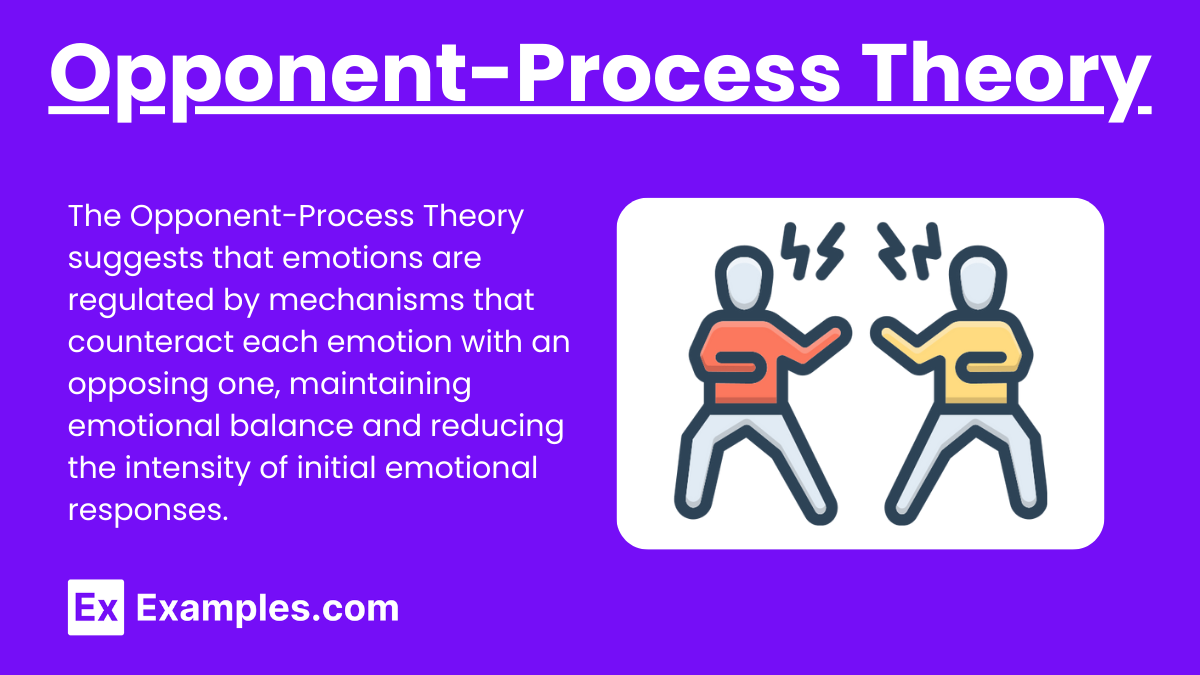
Definition: The Opponent-Process Theory suggests that emotions are experienced in opposing pairs. When one emotion is experienced, the opposite is suppressed.
Key Points:
- Opposing Emotions: Each primary emotion has an opposing emotion.
- Balance: The body seeks to maintain emotional balance or homeostasis.
Example:
- After the thrill of a roller coaster ride (excitement), you might experience a sense of relief or calm (opposite emotion).

